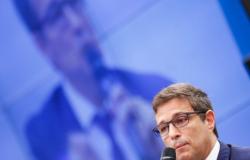Despite the 0.3% monthly drop in Brazilian industrial production in February, the second in a row published by IBGE, economists highlight that the composition of the indicator can be considered positive. In addition to the fact that the decline was concentrated in just one of the categories, intermediate goods, they cite the increase in the annualized comparison and a recovery in capital goods, an indication of an increase in investments.
Bradesco draws attention to the fact that the manufacturing industry remained stable at the margin, but that two sectors stood out positively: vehicle manufacturing (6.5%) and computer equipment (4.2%). “On the other hand, sectors that have the biggest weights were practically sidelined, with food production registering a drop of 0.1% and fuel manufacturing stable”, says the bank in a report.
The bank also says that, in the analysis by use categories, there was a new significant increase in the production of capital goods, of +1.8% compared to January, and that . There was also an increase in typical construction inputs. “Both results point to important growth in investments in the first quarter.”
Continues after advertising
This was also the perception of Santander Brasil, in an analysis written by Gabriel Couto. “The breakdown shows more positive news, as mining had a negative contribution due to the offset of recent positive results, but most categories expanded at the margin”, he details.
He also considers that positive signs have come in the investment-related segments, although they are still far from recovering from last year’s declines. For Couto, the February result implies a transfer of -0.5% in the quarter versus the annualized quarter.
As a result, the projection for the Central Bank’s activity index (IBC-Br) is +0.4% in February and the estimate for quarterly GDP growth is +0.7%.
João Savignon, head of macroeconomic research at Kínitro Capital, comments that the heterogeneity of the industry remains relevant, with some sectors showing strong growth and others with relevant declines.
“When we compare it to the pre-pandemic period, this is evident. The industry as a whole is now 1.1% below that level, with extractive industries operating 4.2% above and manufacturing 1.8% below,” he recalls.
Igor Cadilhac, economist at PicPay, mentions that, among the 25 industrial activities, 10 registered expansion in relation to the previous month, with highlights being motor vehicles, trailers and bodies, and cellulose, paper and paper products.
Conversely, the most important negative influences came from chemical products (-3.5%), extractive industries (-0.9%) and pharmochemical and pharmaceutical products (-6.0%).
The economist’s expectation is for a relatively positive industry this year, due to the recovery of the global manufacturing sector, the robust trade balance – especially exports of oil, iron ore and soybeans – and policies to stimulate economic activity by from the government.
Opposing pressures should come from the slowdown in the global economy and still high interest rates, in addition to the lagged effects of monetary policy. “We project a variation of 1.2% for Brazilian industrial production in 2024.”
Impact of interest
Rafael Perez, economist at Suno Research, in turn, comments that, if last year the extractive industry played a central role in the growth of the sector in general, “for this year, the tendency is for there to be a recovery in other segments, such as the manufacturing industry, capital goods and durable consumer goods, largely due to the fall in the Selic rate and better credit conditions”.
Claudia Moreno, economist at C6 Bank, says that the increase, for the second consecutive month, in the capital goods industry is noteworthy. “This segment was the most impacted by high interest rates and had been on a downward trajectory since the beginning of last year”, she states, considering that it is not yet possible to say that the segment has embarked on a recovery cycle, as it is very volatile.
“In our view, the drop in interest rates should give some breathing space to the industry, but it should not be enough to sustain more robust growth. Our forecast is that industry GDP will close 2024 with growth of 1.6%, below the 3.2% we expect for the services sector. We project Brazilian GDP growth of 2.4% in 2024 and 1.5% in 2025.”
Free Class
The Principles of Wealth
Thiago Godoy, the Financial Dad, reveals the secrets of the biggest investors in the world in this free class
Tags: Economists highlight signs warming investments February
--





